
5 Tips to Help Ward Off and Manage a Viral Illness With Herbs
Post Updated 3/18/2020
When viral illnesses are running rampant, here are 5 tips to help you ward off and manage viral illness with herbs.
Tip #1: Prevention Is Key!
When it comes to avoiding a viral infection, the following preventative measures will go a long way in helping you avoid contracting a virus.
Hygiene & Avoidance Prevention
First and foremost, heed the city, state, and/or federal guidance and/or requirements on social distancing and sheltering in place, which will help stop the spread of this virus.
Here are some other important things you can do proactively (CDC, 2020):
- Simple hygiene is one of the best ways to protect yourself. Wash your hands using soap and warm to hot water, scrubbing for at least 20 seconds. Alcohol-based hand sanitizer with at least 60% alcohol content (CDC, 2020) is a good alternative if you can’t wash (some sources recommend 70% alcohol). However, hand sanitizer is less effective than old-fashioned soap and water. Avoid touching your eyes, mouth, or face, unless you have given your hands a thorough scrub first.
- Stay home if you are sick, and avoid contact with those who are ill, especially if you are immune-compromised, have any of the medical conditions that put you at higher risk, or are an elder individual.
- If you do leave the house, practice social distancing by staying at least 6 feet from other individuals.
- Disinfect frequently touched surfaces like doorknobs, light switches, and faucets. Consider wiping down items you are bringing into your home, as recent experiments by van Doremalen et al. (2000) indicate that the possibility exists for the virus to live up to 24 hours on cardboard and up to 72 hours on plastic or stainless steel.
- Understand the symptoms and risks. The main symptoms people might get during this health crisis are fever with signs of a lower respiratory infection such as cough. Mild to moderate symptoms can be managed at home with isolation as much as possible from other members of the household. Fluids should be taken in normal volumes and plenty of rest is needed. Difficulty in breathing requires an urgent visit to the Emergency Room.
Nutritional Support
We can’t speak about avoiding viral illnesses without mentioning nutrition! One of the best ways to stay well during cold and flu season, or any time of the year for that matter, is to have a healthy, nourished body. One way to do that is by adopting good dietary practices. Eating a whole foods diet is best. That means avoiding processed foods and instead opting for foods with high nutritional value.
Being choosy about the types of foods you eat will go a long way toward nourishing your body. If you consume meat and dairy products, choose high-quality sources that are humanely raised instead of less expensive options that may come from less healthy animals. Cut back or eliminate sugar and alcohol from your diet as both are known to suppress the immune system. Fill your plate with fruits and vegetables free of chemicals and pesticides, and incorporate fermented or cultured foods into your diet to support gut and immune health. All of these suggestions are ways to nourish your body so it is healthy and thus better able to fend off illness or recover after an illness.

Building and Protecting the Immune System With Herbal Immunomodulants, Immune Stimulants, and Antivirals
Incorporating immunomodulant, immune stimulant, and antiviral herbs can help to build, protect, and support your immune system in the long-run.
Immunomodulant Herbs
Immunomodulant herbs support immune function and can be used to keep your immune system humming. These are a great idea throughout cold and flu season. Choose from among herbs that are generally considered safe, such as tonic herbs with this action. Keep in mind immunomodulant and tonic herbs are valued for gentle, general, and slow, long-term benefits, and are not considered an emergency response or any kind of cure.
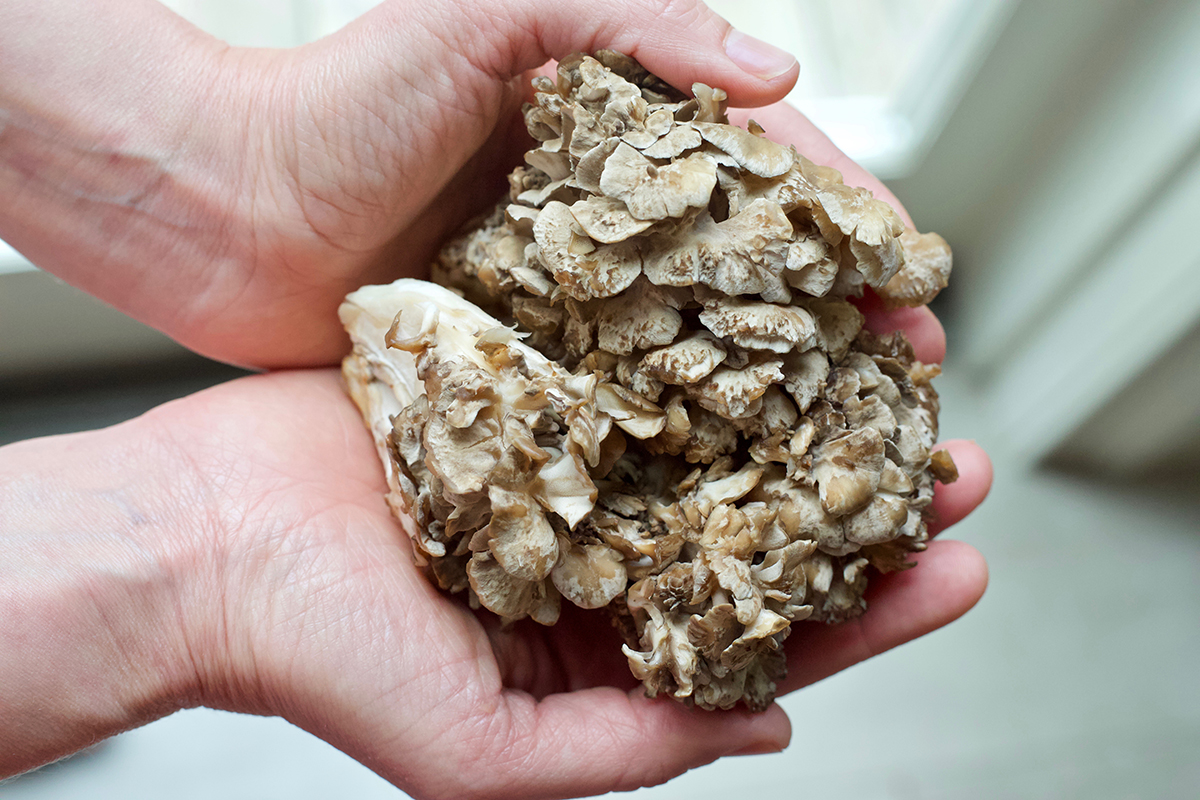
One really great category to look to for ongoing support is the immunomodulant mushrooms. There are several mushrooms that are generally safe and may improve immune system function (e.g., reishi (Ganoderma spp.), turkey tail (Trametes versicolor), and maitake (Grifola frondosa)). The presence of special complex polysaccharides within these mushrooms has been shown to encourage healthy immune response. These may be used every day when one is well—think of these tonics as a potential part of a seasonal daily routine (Stamets, 2002). (Enrolled students of The Mushroom Course, reference the Immunity Lesson provided in your Bonus Portal.)
Astragalus (Astragalus membranaceus) root is an herb that is used much in the same way as the immunomodulant mushrooms. Astragalus root also contains complex polysaccharides that have been shown to improve immune activity, specifically by increasing the activity of white blood cells, stimulating adrenal-cortical activity, and encouraging red blood cell formation in the bone marrow. However, note that there is a traditional practice of not using astragalus during acute illness (Hoffmann, 1993).
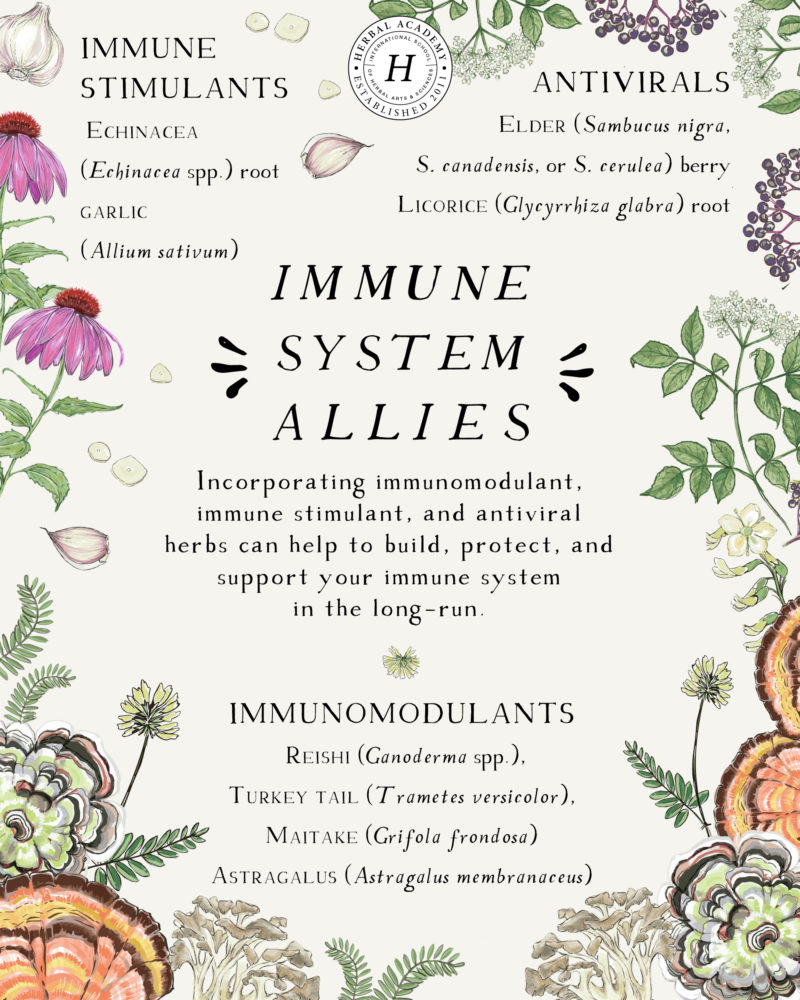
Immune Stimulant Herbs
Let’s say that you have no choice but to engage in travel, or you or someone in your household works in an environment that either travelers or sick people pass through. In addition to conventional wisdom, is there anything more one can do?! Some herbs are called immune stimulants because they are believed to temporarily increase a non-specific response called surface immune activation. This refers to the detection of unfamiliar proteins and can help alert the rest of the immune system that something unfamiliar is present.
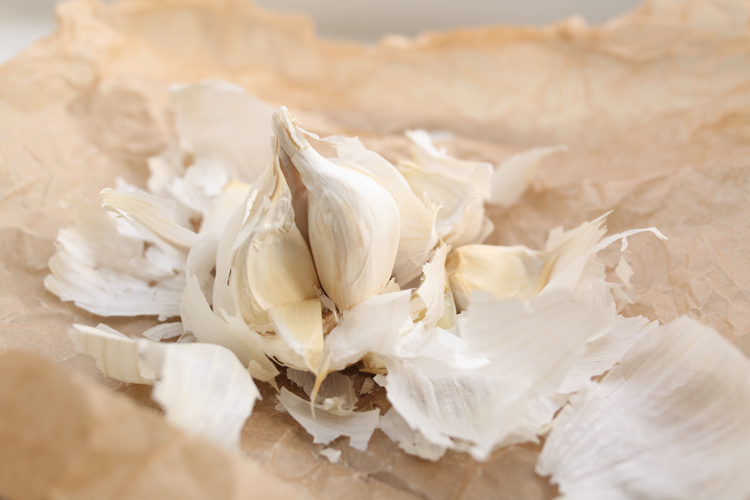
Echinacea (Echinacea spp.) root is a great example of an immune booster that walks the line between “immunomodulant” and “immune stimulant.” It’s a particularly useful herb to add to your daily routine if you’re concerned that you’re at risk for viral infection—for example, if you’re about to travel by plane, train, or bus! Some herbal wisdom suggests reserving it for these occasions, differentiating the use of echinacea from the use of the immunomodulant mushrooms, for example (Katz, 2013).
Garlic (Allium sativum) bulb is another familiar immune stimulant herb (Bergner, 1996). No matter where you are you can almost always find garlic, including if you are traveling abroad or stuck at home. To learn more about the use and benefits of garlic, echinacea, and other herbs for seasonal care, see our free Cold and Flu ebook.
Antiviral Herbs
Elder (Sambucus nigra, S. canadensis, or S. cerulea) berry is a gentle antiviral herb that has been called upon as a longstanding folk remedy during outbreaks of the flu. Some consider it a preventive to be taken throughout flu season (Buhner, 2013; Zakay-Rones et al., 2007). A recent discussion in the herbal community has evaluated the possibility of elderberry contributing to the development of a cytokine storm. We believe that for most individuals elderberry is safe before infection, but it may be that it should be avoided if symptoms develop during outbreaks of novel infections – just to be on the safe side. Elderberry may also not be safe for individuals with autoimmune conditions (though some folks with these conditions do just fine using elderberry). If you’d like to play it ultra-safe, you can avoid elderberry altogether and use some other immune-supportive herbs.
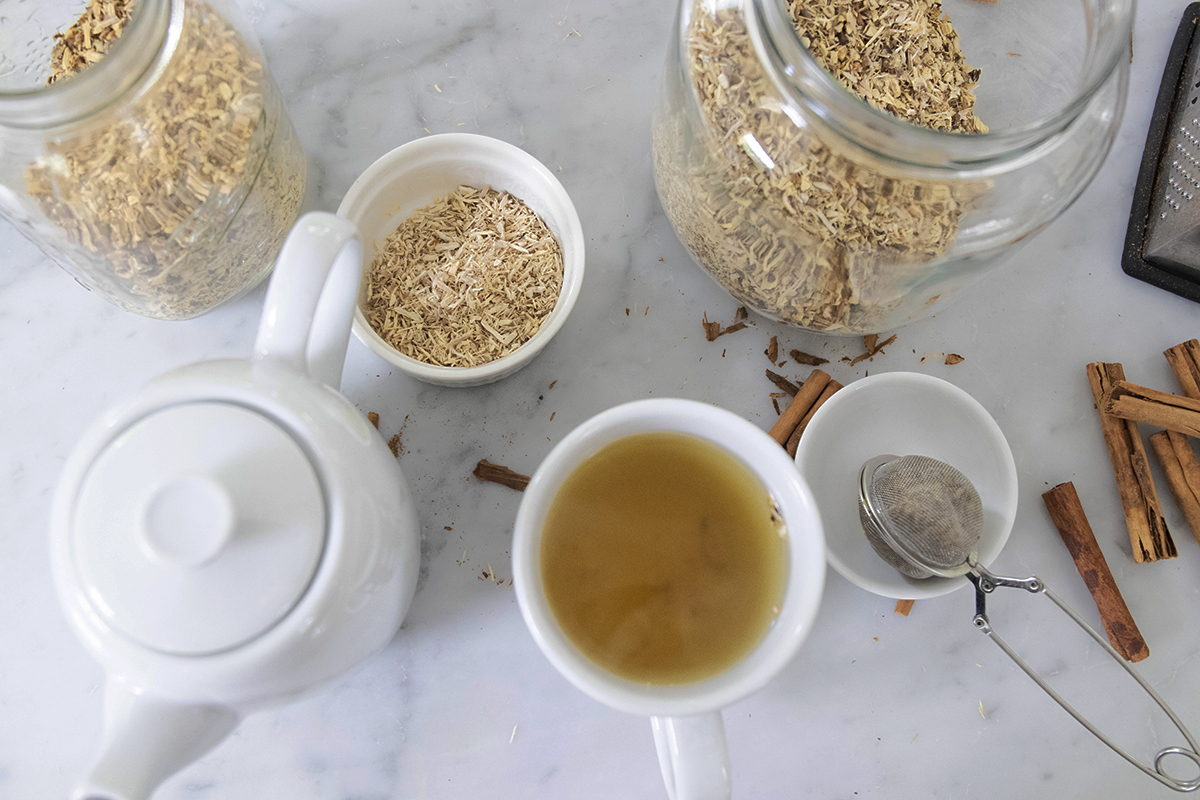
Licorice (Glycyrrhiza glabra) root tea, lozenges, or tincture may also be a good idea in winter months for some of the same reasons. Licorice is an immunomodulant and antiviral, and it is moistening, supporting the mucosa of the mouth and throat. Additionally, licorice may have some anti-inflammatory activity. Those with high blood pressure should avoid this herb and choose from among the others (Buhner, 2013).
For more extensive information about when and how to use elderberry and other antiviral herbs, download our free Cold and Flu ebook complete with easy to follow recipes and instructions.

Tip #2: Feeling Sick? Call a Doctor!
Any time there is a new or unusual infection circulating, any person with characteristic symptoms should contact a conventional medical provider to report it and get an assessment about how to proceed. When an outbreak is in the news, infectious disease specialists and care providers request that individuals call medical facilities for instructions on how to support themselves and protect others while seeking assessment and care.
It is of utmost importance to seek the assessment and advisement of licensed professionals who are up to date with current recommendations.

Tip #3: At-Home Symptom Management
Whether or not you receive a positive diagnosis for a viral illness, your doctor may clear you to manage symptoms at home. Chances are, your doctor has provided information on how to manage common symptoms of a viral illness at home. If you are interested in using herbs to support your body during this time, talk with your doctor about your plans.
Many herbs can help to soothe cold and flu symptoms; some of these may also offer some of the immune-supportive actions mentioned in sections above. Here are some of our favorites:
Tulsi (Ocimum tenuiflorum) aerial parts (also called holy basil) is a pleasant-tasting, generally safe herb that makes a wonderful tea. Tulsi tea can be anticatarrhal, warming, soothing, anti-inflammatory, gently lifting to mood and energy without being stimulating, and some sources even call it an antiviral herb (Wood, 2008). This is also a sound choice for simple at-home care as it is available as a boxed tea and is widely consumed as a food item with very few adverse events reported. Tulsi is also featured in our Cold and Flu ebook.
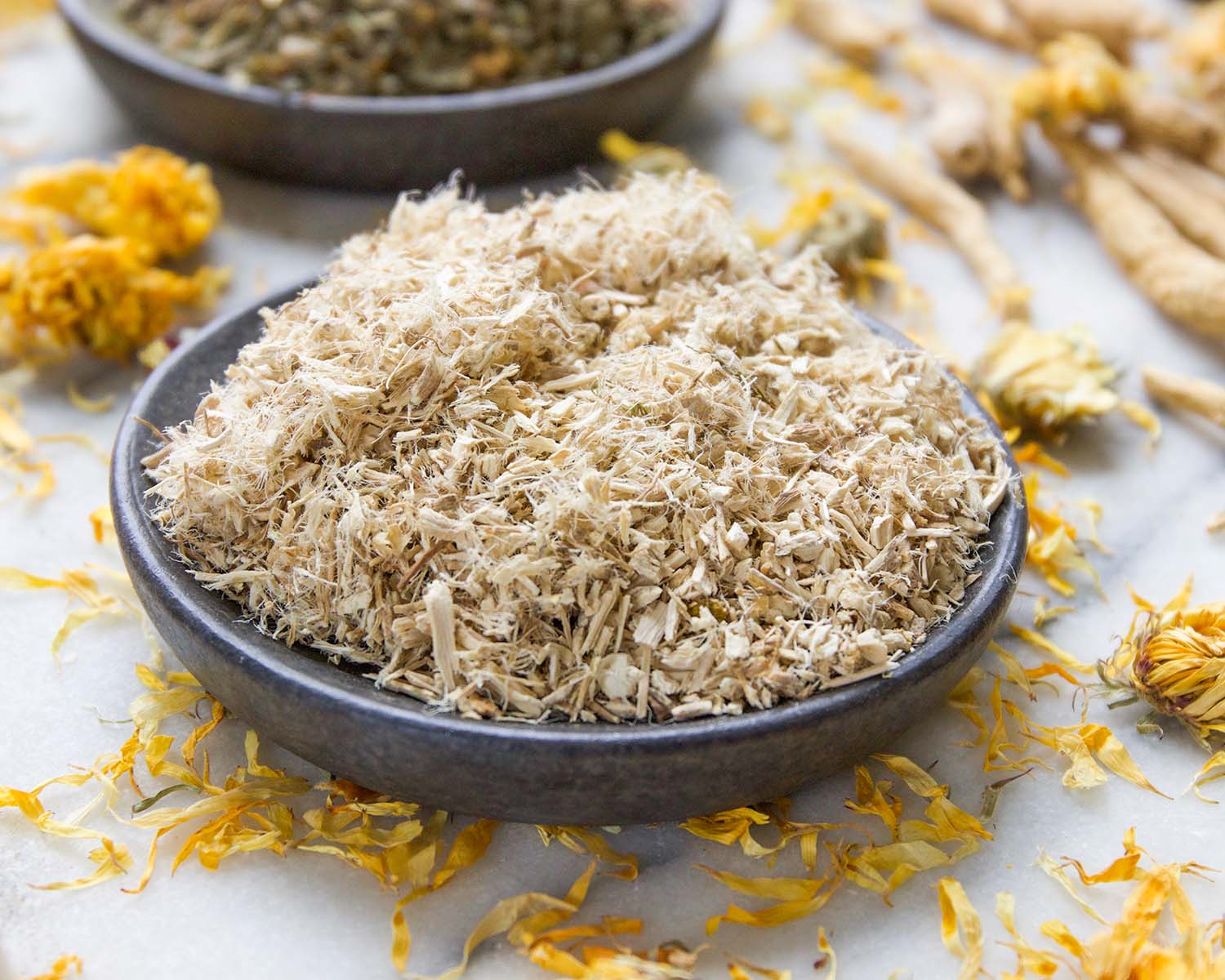
Demulcent herbs can be especially soothing to the irritation of a dry or relentless cough or help encourage movement of dry, stuck lung congestion. Marshmallow (Althaea officinalis) leaf or root is extremely demulcent in cool-water infusions. Licorice (Glycyrrhiza glabra) root also has demulcency and there are many other herbs with this quality. Linden (Tilia spp.) bract and flower is one of the gentle demulcent herbs that is also used as a pleasant, soothing tea. Learn more about linden in a blog feature on using this gentle and effective herb.
Expectorant herbs can be supportive during any kind of cold or flu. Highly aromatic herbs such as eucalyptus (Eucalyptus spp.) leaf or thyme (Thymus spp.) leaf can be used in herbal steams or atomizers, and gentler aromatic herbs such as peppermint (Mentha x piperita) leaf or hyssop (Hyssopus officinalis) aerial parts can help release excess mucus when used as teas or herbal steams. Find out how to do an herbal steam and learn about additional herbs that can be used as expectorants: Breathe Easier with a Decongesting Herbal Steam.
Symptoms such as a fever, sore throat, and a cough are also common symptoms of many viral infections, and supportive herbal recipes for these symptoms can be found in our Cold and Flu ebook.
In mid-March, 2020, clinicians recognized that some affected individuals may be presenting with minor gastrointestinal (GI) and bowel symptoms in addition to characteristic respiratory symptoms. In this case, the appropriate gentle astringents for loose bowels may increase comfort. Yarrow (Achillea millefolium) is one common astringent herb, however, there are many other choices, and using whatever safe astringent herbs you have on hand is wiser than ever while we try to minimize the spread of a virus. Black tea (Camellia sinensis) is another common household astringent herb not to be overlooked! Nausea is still best comforted by herbal standbys such as peppermint (Mentha x piperita) and ginger (Zingiber officinale). Digestive cramping may be soothed by these or other carminatives such as cinnamon (Cinnamomum spp.) and cardamom (Elettaria cardamomum), or in the absence of appropriate herbs, heat, relaxation, and paced hydration.
Amidst concerns about liver health, gentle alterative and liver-supportive herbs are still relevant. Dandelion (Taraxacum officinale), burdock (Arctium lappa), and barberry (Berberis spp.) may be helpful here, particularly for those not reliant on other medications which may be affected by herbs with action on the liver.
Tip #4: Give It Time
Sometimes you get an assessment from a medical professional, follow their recommendations, and are vigilant about self-care, rest, immune support, and medical follow-up, and still, your cold or flu seems to last longer than expected. If you have concerns about your illness, contact a primary care provider for a follow-up assessment, even if over the phone. If you are assured it is not a serious or life-threatening condition and are advised to continue the common tea, fluids, and rest regimen, but your body just isn’t fighting it in due time, here are a few additional herbs to consider.
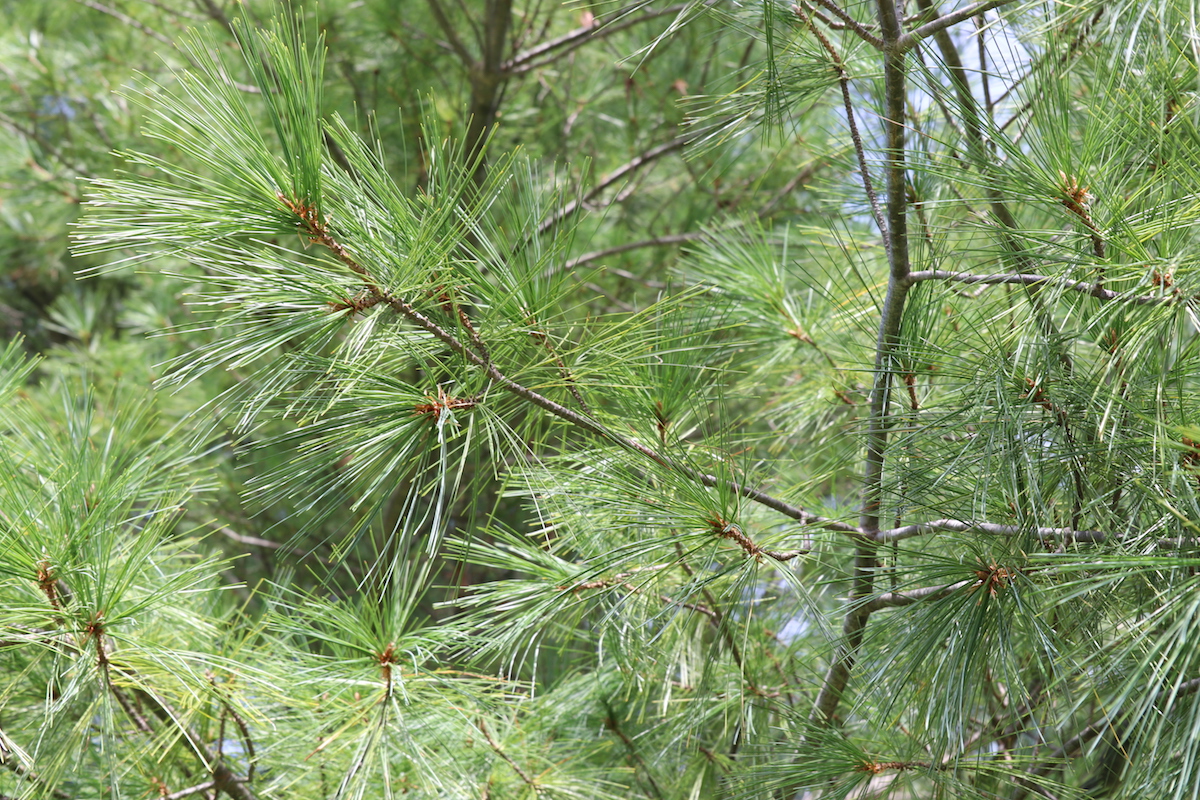
Resinous herbs like the needles or sap from certain species in the Pinaceae (pine) family have strong expectorant and antiseptic actions. Propolis, the resinous substance produced by bees, has similar properties. These resins should be used in small amounts, both for the sustainability considerations of propolis and because larger amounts can cause nausea. A few drops of propolis tincture at a time, diluted in a quarter ounce of warm water, can help protect and soothe the throat and transfer some antiseptic properties. For tree resins or tincture of white pine (Pinus strobus) needle, a typical dosage is around ¼ to ½ mL tincture (5-10 drops) at a time diluted in a bit of warm water. You can harvest resin from almost any species of true pine, but making resin tincture is a very messy task that’s best done while you’re still in good health—so if you don’t have it on hand before you get sick, you may want to skip this one!
Some pine needles such as those from white pine (Pinus strobus) can be made into a strongly expectorant and mildly antiseptic herbal tea. Infuse a handful of chopped needles into 2 cups of boiling water, then steep, covered, for 10 minutes. Consume to tolerance for taste.
Boneset (Eupatorium perfoliatum) is one of the surprising very common herbs that has been used for cold and flu support, and there is research to support its use as an adjuvant during infection. In the case of boneset, this means it isn’t exactly anti-infective, but may support the body’s natural and healthy progression of responses. The aerial parts (leaf and flower) are used in tea or tincture. Boneset is also strongly diaphoretic, and has been traditionally used to help “break” a high fever, so you might think of it only for early on in colds and flus but it can additionally be helpful later. It is alarmingly bitter, but consider the following: though the research is limited, there is support for boneset’s activity against influenza A (H1N1), and its anti-inflammatory action is supportive when respiratory irritation lingers (Buhner, 2013). Herbalist Stephen Buhner writes about one specific indication for boneset’s use for respiratory irritation: “When the acute stage has passed but there is continued chronic fatigue and relapse, take 10 drops of tincture in hot water 4x daily” (Buhner, 2013, p. 248).
Old and new wisdom about viral infections such as colds and the flu suggests keeping the body warm, with the exception of managing especially high fevers acutely. Herbalist wisdom, whether guided by old doctrines or contemporary voices in Western herbalism, suggests generally using herbs with a warming and drying nature to support the body in driving off viral infections that last. Boneset is sometimes considered cooling, but it seems to have a diaphoretic action that initially warms and then ultimately cools the body, encouraging circulation and sweating. If using herbs with a cool nature, be sure to combine with some warming herbs, or warm baths, warm attire, and warm environment.
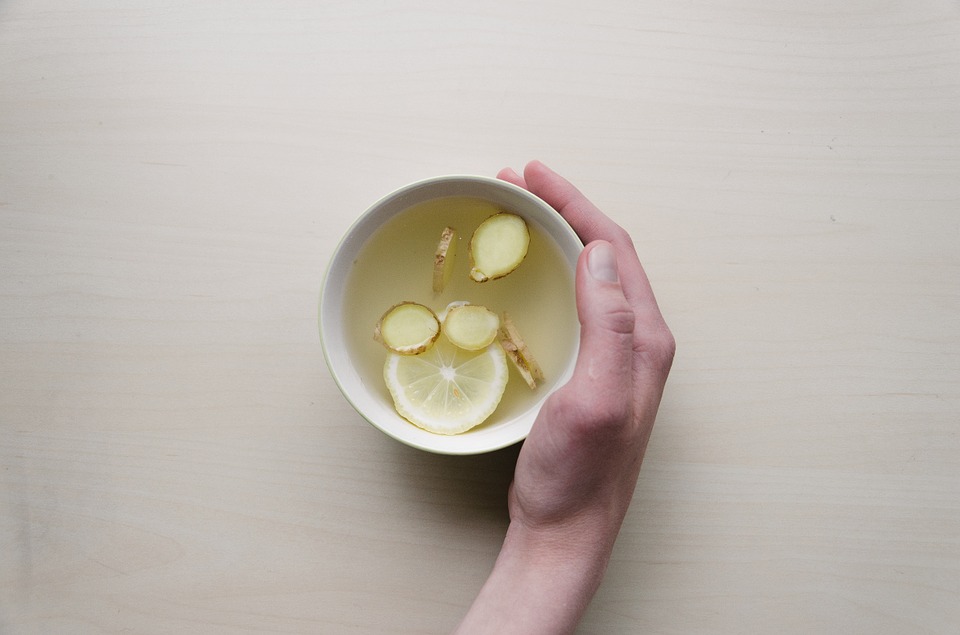
Lomatium (Lomatium dissectum) root is a potent and effective antiviral that is warming and drying in part due to a resinous property. However, this is the kind of herb one might reserve for the instance of a novel or exceptional viral infection because it is not abundant. Its range is limited, and the root is the part used. It is on the United Plant Savers’ “At-Risk” list of wild herbs under exceptional harvesting pressure (United Plant Savers, 2018). If a household were affected by a novel virus and advised to do care at home under medical supervision, and this herb was in ones’ home apothecary, this would be the time to pull it out. Typically, it has been prepared as a tincture, and used in small amounts regularly, ½ ml several times throughout the day while affected (Buhner, 2013). Small amounts of herbal tea infusion would have a similar effect but the taste is quite strong!
There is another more familiar herb, more likely to be found in cabinets and apothecaries already, and more available for regular use during typical colds and flus. Ginger (Zingiber officinale) rhizome (available at the grocery store!) could be considered somewhat analogous to lomatium root. In particular, ginger is a warming, drying, and antiviral root (Buhner, 2013). It can be made into an herbal tea by simmering slices of the fresh root in water or via the fresh ginger tea recipe in our Cold and Flu Season ebook. It can also be used as a tincture. Herbalist Stephen Buhner suggests using it every 60 minutes when using it as an antiviral, and he indicates that the juice freshly squeezed from the rhizome is particularly potent (Buhner, 2013).
Antibacterial Backup
Additionally, antibacterial herbs may be added, as raw irritated mucosal tissue from coughing and sneezing may be more susceptible to secondary bacterial infections. A few antibacterial herbs that are used to support the respiratory tract include Oregon grape (Mahonia spp.) root (sustainably wild harvested or cultivated), barberry (Berberis spp.) root, and oregano (Origanum vulgare) leaf (Birdsall & Kelly 1997; Kintzios, 2002; Stermitz et al., 2000). Similar to the resinous herbs mentioned above, these herbs are also very strong in flavor and action. Small amounts of tincture are often taken for acute use, or small amounts or infusion can be drunk if the taste is tolerated. These herbs are also available as encapsulated products.
These are certainly not the only herbs with antibacterial potential. These are standouts because they are considered strong relative to many other herbal choices and have additional expectorant and anti-inflammatory action.

Tip #5: Want More Herbal Resources for Viral Support?
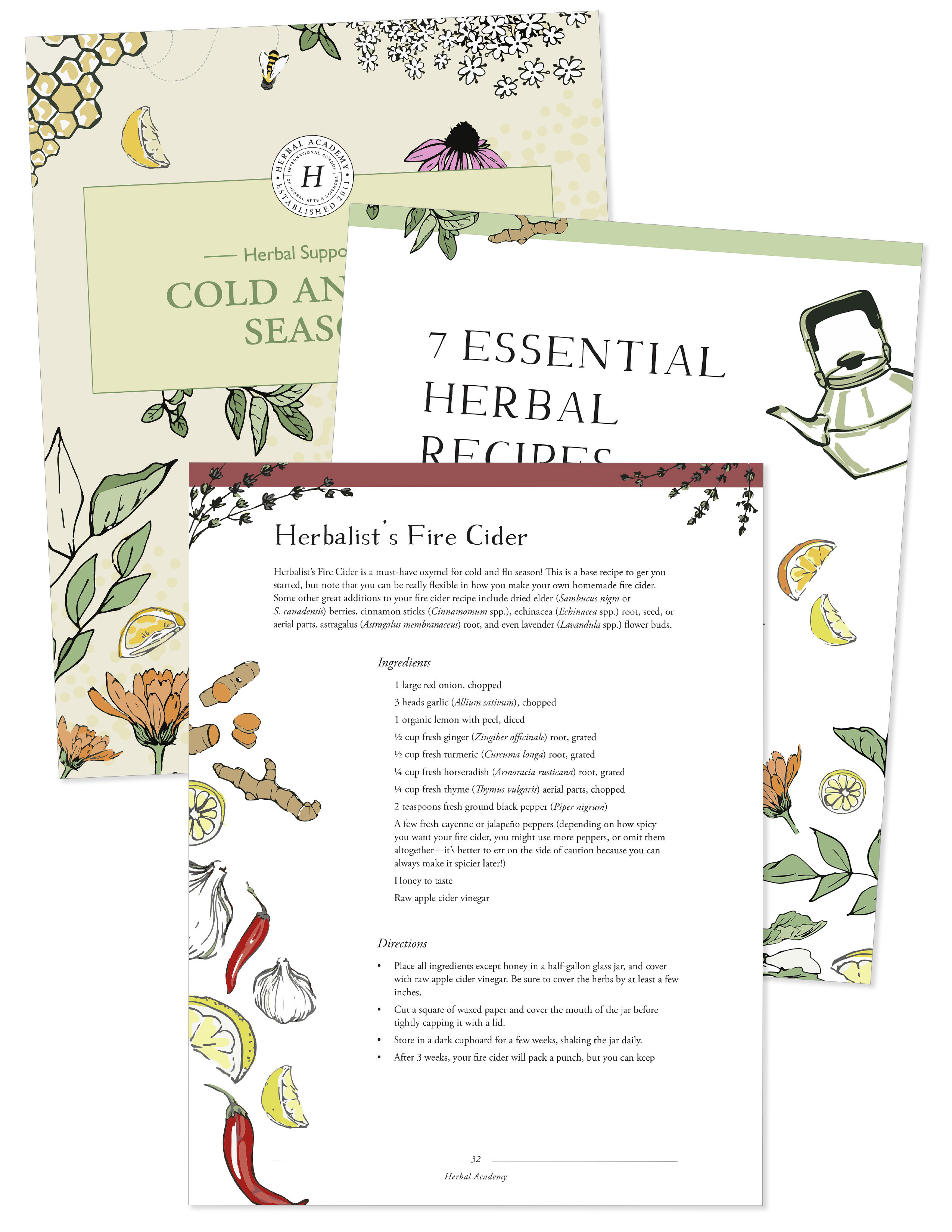
The Herbal Support for Cold and Flu Season ebook provides more information about echinacea and elder, along with other essential herbs for immune support. We’re also unpacking some of our favorite preventative tips and herbal recipes for cold and flu season in the ebook!
Grab your free copy here: https://theherbalacademy.com/get-cold-flu-ebook/
In Closing
All of the herbs mentioned above should only be considered wellness-supporting herbs during cold and flu season, and not a protection or cure in the event of exposure.
While prevention and herbal support can go a long way in providing your body some extra protection from viral illnesses and the effects, it does not guarantee you will not contract and be affected by a virus if you are exposed to it. However, incorporating herbs into your wellness plan—before, during, and after an illness—can help to make you more comfortable and help support the body in recovery.
REFERENCES
Bergner, P. (1996). The Healing Power of Garlic. Rocklin, CA: Prima Publishing.
Birdsall, T.C., & Kelly G. (1997). Berberine: Therapeutic potential of an alkaloid found in several medicinal plants. Alternative Medicine Review, 2(2), 94-103.
Buhner, S. (2013). Herbal antivirals. North Adams, MA: Storey Publishing.
Centers for Disease Control. (2020). Coronavirus disease 2019 (COVID-19). Retrieved from https://www.cdc.gov/coronavirus/2019-ncov/index.html
Hoffmann, D. (1993). An elders’ herbal. Rochester, VT: Healing Arts Press.
Katz, N. (2013). Echinacea. Natural Herbal Living Magazine. Retrieved on 01/29/20 from https://herbarium.theherbalacademy.com/2015/08/natural-herbal-living-echinacea/
Kintzios, S.E. (Ed.). (2002). Oregano: The genera Origanum and Lippia. London and New York: Taylor and Francis.
Stamets, P. (2002). Mycomedicinals. Olympia, WA: Mycomedia Productions
Stermitz, F.R., Lorenz, P., Tawara, J.N., Zenewicz, L.A., & Lewis, K. (2000). Synergy in a medicinal plant: Antimicrobial action of berberine potentiated by 5′-methoxyhydnocarpin, a multidrug pump inhibitor. Proceedings of the National Academy of Sciences, 97(4), 1433-1437. http://doi.org/10.1073/pnas.030540597
United Plant Savers. (2018). Species at-risk. Retrieved from https://www.unitedplantsavers.org/species-at-risk
van Doremalen, N., Morris, D.H., Holbrook, M., Gamble, A., Williamson, B.N., Tamin, A., …, & de Wit, E. (2000). Aerosol and surface stability of SARS-CoV-2 compared to SARS-CoV-1 [Correspondence]. The New England Journal of Medicine. http://doi.org/10.1056/NEJMc2004973
Wood, M. (2008). The earthwise herbal: A complete guide to old world medicinal plants. Berkeley, CA: North Atlantic Books.
Zakay-Rones, Z., Varsano, N., Zlotnik, M., Manor, O., Regev, L., Schlesinger, M., & Mumcuoglu, M. (2007). Inhibition of several strains of influenza virus in vitro and reduction of symptoms by an elderberry extract (Sambucus nigra L.) during an outbreak of Influenza B Panama. The Journal of Alternative and Complementary Medicine, 1(4). https://doi.org/10.1089/acm.1995.1.361








